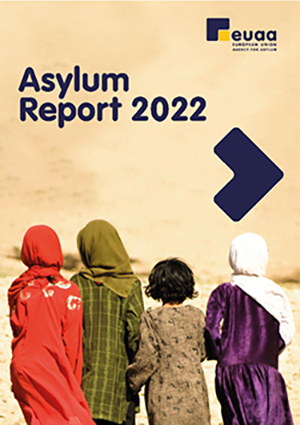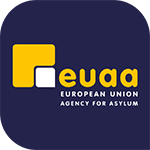Asylum Report 2022
Related resources
- Asylum Report 2022: Executive Summary
- National Asylum Developments Database
- National Asylum Developments 2022
- Sources on Asylum 2022
- Press Release
Fact Sheets
- Recognition rates: Granting international protection in EU+ countries
- Assessing the age of asylum applicants and providing guardianship
- Reception conditions for children seeking international protection
- Afghan nationals seeking international protection in the EU+
- Protecting women and girls in the asylum procedure
Asylum Report 2022: Executive Summary
Translations
EU languages: BG, CZ, DA, DE, EL, ES, ET, FI, FR, GA, HR, HU, IT, LT, LV, MT, NL, PL, PT, RO, SK, SI, SV
Non-EU languages: AR, MK, RU, SQ, SR, TR, UK
(The following translations have not been verified: DA, ET, GA, RU, UK)
Main sections of the Asylum Report 2022

© European Union Agency for Asylum (EUAA), 2022
Neither the European Union Agency for Asylum (EUAA) nor any person acting on behalf of the EUAA is responsible for the use that might be made of the information contained within this publication.
Cover photo: iStock/Kostas7
HTML
ISBN 978-92-9487-439-9
doi: 10.2847/265367
BZ-AB-22-001-EN-Q
ISSN 2314-9701
Reproduction is authorised provided the source is acknowledged. For any use or reproduction of photos or other material that is not under the EUAA copyright, permission must be sought directly from the copyright holders.
Citation
Citation: European Union Agency for Asylum (EUAA) (2022). Asylum Report 2022: Annual Report on the Situation of Asylum in the European Union. Luxembourg: Publications Office of the European Union.








